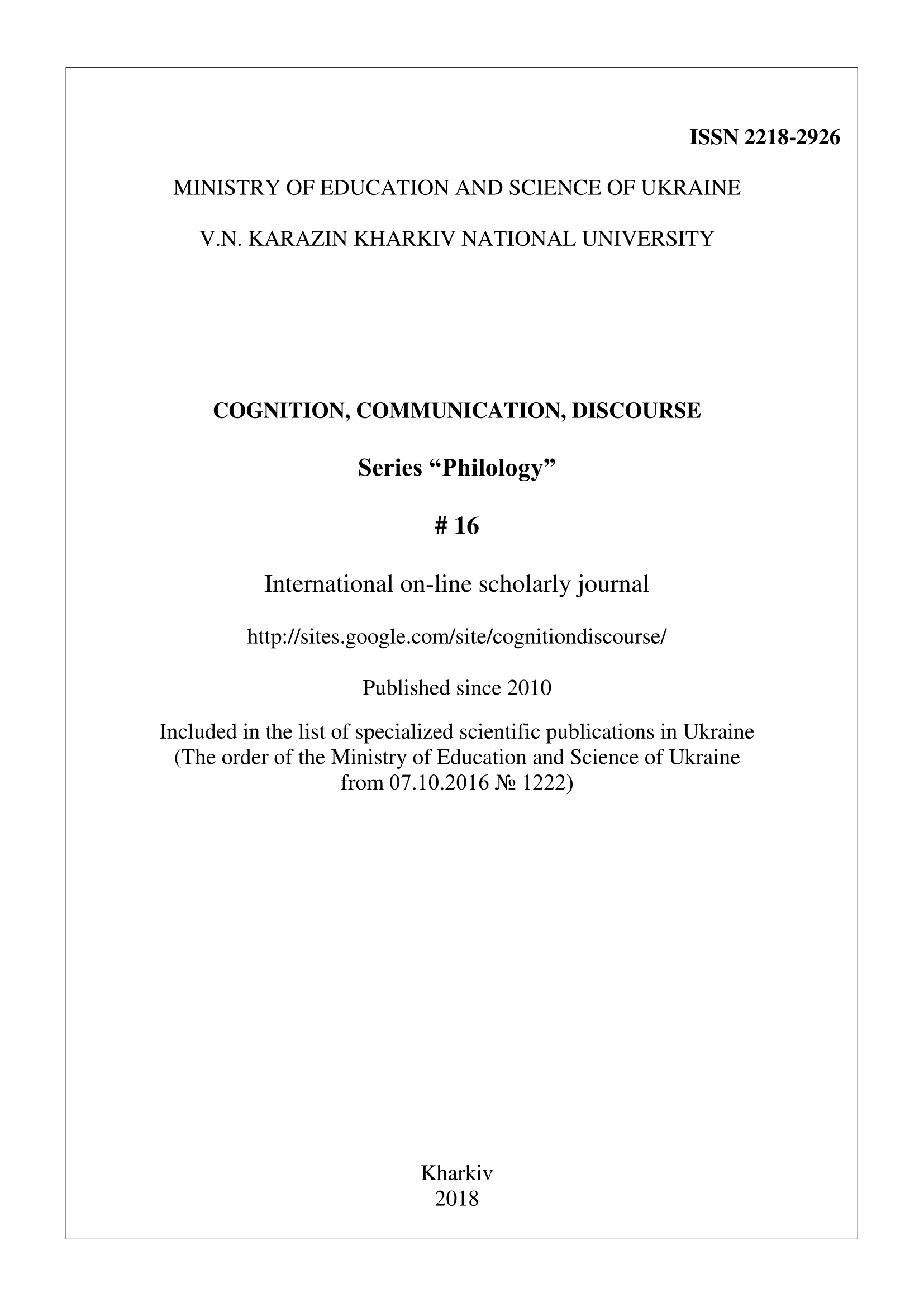Models of narration in literary texts for children (case study of Norman Lindsay’s fairy tale “The Magic Pudding”)
Abstract
The research focuses on reconstruction of the model of narration “Merry-go-round” in Norman Lindsay’s fairy tale “The Magic Pudding” and revealing lexical, grammatical, semiotic means of its actualization in the text. It is believed that narration refers to the concrete and directly visible way in which a story is told, comprising word choice, sentence length and narrating agent. The model of narration is realized as a cognitive and linguistic construal which we represent as an abstract schema. The model of narration “Merry-go-round” is inbuilt into the narrative structure of the text. The semantics of the name of the model taken from different thesaurus sources: etymological, synonymous and definitional correlates with the name of the game and enables us to reveal typical features of the word and main characteristics of the game itself: it is something pleasant and funny for children, it moves round, has circular movements. Circular fast movements of merry-go-round correlate to the description of its movements in narrative situations in the fairy tale i.e. the repetition of adventures of main characters. On lexico-grammatical level circular movement is actualized via motion verbs. Text illustrations of the fairy tale serve as semiotic means of realization funny circular movements. It is claimed that such narrative structure of the text subconsciously activates in a child’s mind his/her knowledge, memories, emotions connected with the play Merry-go-round and as a result makes a child get interested in a fairy tale and keeps him/her engaged in the development of the plot.
Downloads
References
A short etymological dictionary of modern English (1996). London / New York : Rouledge. Taylor and Francis group.
Alber, J. (2016). Unnatural narrative. Impossible worlds in fiction and drama. University of Nebraska Press.
Beauvais, C. (2015). The mighty child. Time and power in children’s literature. Amsterdam: John Benjamins B.V.
Bernheimer K. Fairy tale is form, form is fairy tale. Available from : http://www.katebernheimer. com/images/Fairy%20Tale%20is%20Form.pdf
Chrzanowska-Kluczewska, E. (2004). Language games: pro and against. TAiWPN Universitas Kraków: Universitas.
Genette, G. (1998). Фигуры [Figures]. Moscow: Izd-vo im. Sabashnikovyh.
Glazer, J., Gurney W. III (1979). Introduction to children’s literature. New York: McGraw-Hill.
Herman, D. (1999). Narratologies : New Perspectives on Narrative Analysis. Columbus : Ohio State UP.
Hintikka, Ja. (1980). Logico-epistemologicheskiye issledovaniya [ The Logic of Epistemology and the Epistemology of Logic]. Moscow : Progress.
Korthals Altes, L. (2014). Ethos and narrative interpretation. The negotiation of values in fiction. University of Nebraska Press.
Kubryakove, E. (1997). Chasti rechi s cognitivnoj tochki zrenija [Parts of speech from the cognitive perspective]. Moscow : Institut jazykoznaniya RAN.
Lindsay, N. The Magic pudding (2010). – HarperCollinsPublishers Australia Pty Limited.
Macmillan English Dictionary for Advanced Learners. (2012). London / New York: MacMillan / A.& C. Black.
Margolin, U. “Narrator” Handbook of narratology (2009). Berlin / New York : Walter de Gruyter, 351 – 365
Ogata, T., Akimoto, T. (2016). Computational and cognitive approaches to narratology. The USA: IGI Global.
Propp, V. (1928). Morphologiya Skazki [Morphology of the fairy tale]. Leningrad : Academia.
Schmid, W. (2003). Narratologiya. Moskva: Yazyki slavyanskoj kultury.
Toolan, M. (2016). Making sense of narrative text. Situation, repetition, and picturing in the reading of short stories. New York: Routledge.
Wittgenstein, L. (2005). Izbrannye Trudy [Selected Papers]. Moscow : Territoriya buduschego.
Authors, who publish with this journal, accept the following conditions:
The authors reserve the copyright of their work and transfer to the journal the right of the first publication of this work under the terms of the Creative Commons Attribution License (CC BY), which allows other persons to freely distribute a published work with mandatory reference to the authors of the original work and the first publication of the work in this journal.
Authors have the right to enter into separate additional agreements for the non-exclusive dissemination of the work in the form in which it was published by this journal (for example, to post the work in the electronic institutions' repository or to publish as part of a monograph), provided that the link to the first publication of the work in this journal is given.
The journal policy allows and encourages the authors to place the manuscripts on the Internet (for example, in the institutions' repositories or on personal websites), both before the presentation of this manuscript to the editorial board and during review procedure, as it contributes to the creation of productive scientific discussion and positively affects the efficiency and dynamics of citing the published work (see The Effect of Open Access).




